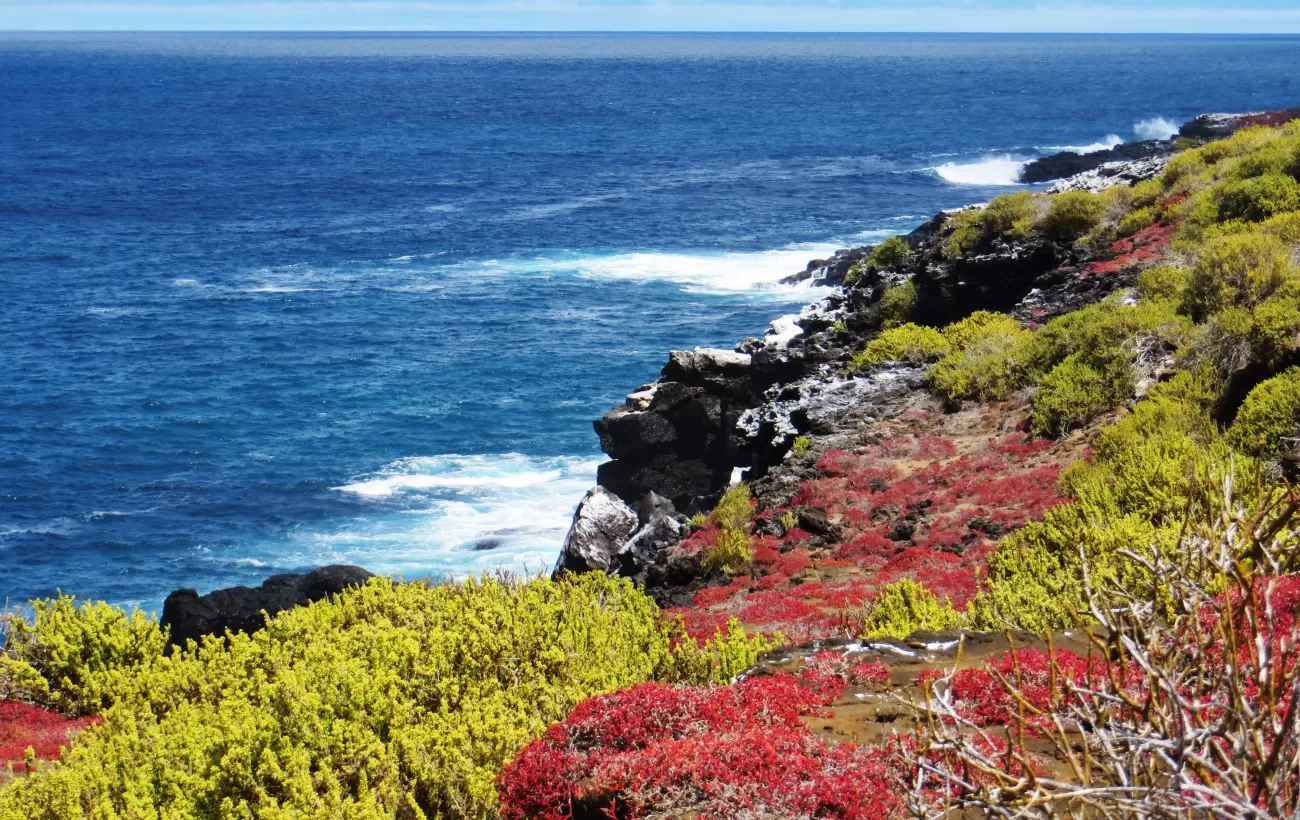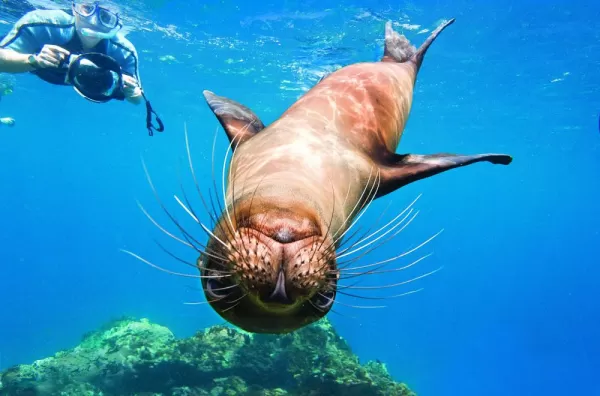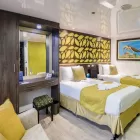Despite its name, there is no “port” at Puerto Egas, but you might see a few remains of the last attempts to colonize the island during the 60’s. The trail goes along the coastline which is rich in wildlife, with marine iguanas basking in the sun everywhere, Galapagos sea lions, herons, oystercatchers and many shorebirds. At the end of the trail an area called “the grottos” is home for a small colony of the endemic Galapagos fur seal, much more difficult to see at close range than its cousin. As recently as 2019, land iguanas where re-introduced to the area, so look around for these impressive reptiles which where extinct from Santiago for over a century.
Snorkel: You can snorkel from the beach and explore an area of rocky bottoms which is excellent for fish, turtles and reef sharks. Often, sea lions are also present and are happy to interact with divers.
Highlights: Galapagos sea lions, Galapagos fur seals, oystercatchers, marine & land iguanas, Galapagos hawks, herons, shorebirds, Darwin finches, Galapagos doves.
Trail: 2.3 km / 1.4 mi
Level: Easy
Wet landing, Hiking, and Snorkeling
Rabida is a small island famous for its reddish lava rocks (rich in iron) which gives it a unique look. The beach is also red and hosts a small colony of sea lions. There is a small salt water lagoon where you will see ducks and stilts and sometimes flamingoes. The trail will take you inland to get beautiful views of the beach and the lagoon. Look for Darwin finches, flycatchers and mockingbirds. In the cliffs along the coast you can find Nazca & blue-footed boobies, brown noddy, herons and the two species of sea lions: Galapagos and fur seals.
Snorkel: You can snorkel from the beach and explore a sheltered rocky area, which is excellent for fish, sea lions and reef sharks. Look at the high diversity of small invertebrates attached to the vertical walls.
Highlights: Red-sand beach, Galapagos sea lions, Galapagos hawks, flycatchers, Darwin finches, Galapagos mockingbirds, ducks, flamingoes.
Trail: 2 km / 1.2 mi
Level: Easy
Wet landing, Hiking, Snorkeling, Panga ride, Paddle boarding, and Kayaking

















